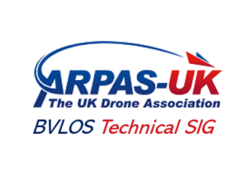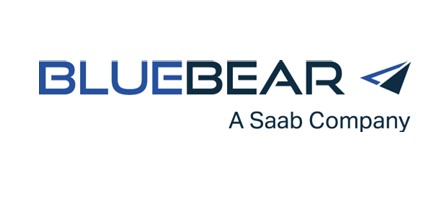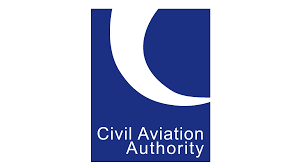Six projects have been selected for trials under a new UK Civil Aviation Authority scheme that will test drone use in deliveries, inspections of infrastructure, emergency services and flights to remote locations.
The regulator has chosen the trials to take place that will help safely integrate drones flying beyond visual line of sight (BVLOS) of their operator into UK airspace, helping to make this vital extension to drone flying an everyday reality.
BVLOS flights will be carried out at distances beyond the flyer’s ability to see the drone. These flights use advanced technologies for navigation, control and to detect other aircraft.
The UK Civil Aviation Authority has selected the projects, including:
- Amazon Prime Air; (consumer drone deliveries)
- Airspection; (inspecting offshore windfarms)
- National Police Air Service; (NPAS) (exploring uncrewed aircraft use in policing)
- NATS; (BVLOS inspections over the North Sea)
- Project SATE; (Sustainable Aviation Test Environment) (flights to Orkney)
- Project Lifeline; (medical deliveries)
The trials will gather key safety data, such as how drones detect and avoid other aircraft, the electronic signals they can send to be able to be visible to other airspace users and air traffic control.
This will support the regulator’s ongoing development of policy and regulations so that drone flights can be fully integrated with other airspace users.
Sophie O’Sullivan, Director of Future of Flight at the UK Civil Aviation Authority, said:
“These innovative trials mark a significant step forward in integrating drones safely into UK airspace. By supporting projects ranging from consumer deliveries to critical infrastructure inspections, we are gathering essential data to shape future policies and regulations.
“Our goal is to make drone operations beyond visual line of sight a safe and everyday reality, contributing to the modernisation of UK airspace and the incorporation of new technology into our skies.”
The UK Civil Aviation Authority invited organisations to bid to participate in an innovation sandbox to validate and test their concepts, supporting the development of BVLOS capabilities.
Innovation sandboxes are controlled environments where organisations can test and further develop their new technology against the regulatory framework, helping applicants maximise the readiness of their innovation, and also help the UK Civil Aviation Authority better evolve regulations to better support both innovators and existing users.
The BVLOS sandbox is part of a collaboration with UK Research and Innovation (UKRI) that is supporting the creation of the aviation ecosystem needed to accelerate the introduction of advanced air mobility (AAM), drones, and electric sub-regional aircraft in the UK.
Simon Masters, Future Flight Challenge Deputy Director at UK Research and Innovation, said:
“The UKRI Future Flight challenge team are excited to be working in partnership with the UK Civil Aviation Authority, working together to accelerate the introduction of drone operations in the UK.
“These have the potential to transform how we deliver goods and provide services, particularly in less well-connected regions. These new sandbox projects are a great step towards realising these ambitions.”
The new trials will also help develop plans for how drones can be safely integrated with other airspace users, as part of the regulator’s wider Airspace Modernisation Strategy.
The projects included in the trial are:
Amazon Prime Air
- Prime Air is a delivery system from Amazon designed to safely get small packages to customers in less than an hour using drones.
Airspection
- The Airspection – Scalable Offshore Wind Project aim to provide safe and reliable drone services for remote infrastructure. Accessing offshore wind turbines is currently a major challenge for the industry. Supported by a world leading offshore wind developer, this project aims to develop scalable Beyond Visual Line of Sight (BVLOS) drone operations for offshore wind farms to enhance safety, reliability and environmental impact. The project will be trialled at an offshore wind farm and will serve as the foundation for remote drone services in this industry, reducing the need for vessels, minimising carbon emissions, and supporting the expansion of the UK offshore energy industry.
NPAS
- In 2021, the National Police Air Service established its Futures & Innovation Team. The team’s objectives were to investigate Beyond Visual Line of Sight capabilities and its potential adoption as part of a blended fleet.
NPAS’s ambition is to fly an uncrewed aircraft, beyond visual line of sight, over a six month period, in an environment that is representative of where NPAS crewed aircraft would be tasked. It will look to test, and verify, not only the payload capabilities, which are identical to the performance of our crewed aircraft, but also validate the onboard DAA capabilities. This will allow NPAS to understand better what future air support capabilities it could adopt.
NATS
- NATS Services, aligned with the CAA’s Airspace Modernisation Strategy, is committed to working towards an airspace that’s safe and integrated for all users. In support of this ambition, we are delighted to be working with the CAA, Flylogix and wider partners to enable this pioneering project over the North Sea.
- This is a chance for us to introduce and evaluate our early BVLOS approval services, something we hope will support and encourage the development of beyond visual line of sight drone operations across the UK.
Project SATE
- The Sustainable Aviation Test Environment (SATE) intends to develop a trial airspace test environment, the Trial Orkney Test Zone, and will test integrated manned and unmanned aircraft operations from Kirkwall Airport. The test zone will be specifically designed to enable a wide range of unmanned aircraft system (UAS) platforms to conduct Beyond Visual Line of Sight (BVLOS) trials and operations in unsegregated Class G airspace. It will demonstrate the feasibility of operating a drone Hub-and-Spoke route network within unsegregated airspace based on integrated operations from Kirkwall airport (the hub) to the Orkney Island Council airfields and other use cases located across the Orkney archipelago.
- Consortium partner Highland and Islands Airports Ltd (HIAL) will lead the project in conjunction with fellow partner Windracers. HIAL has a wealth of experience in airspace management, air traffic service provision and airport operations and Windracers bring extensive experience having operated their medium-lift long range Ultra drone in BVLOS trials in diverse environments.
Project Lifeline
- The LifeLine project is key to using drones for emergency medical services, delivering critical medical equipment—such as defibrillators (AEDs), EPI pens, and anti-bleeding kits—faster than ever before. The project also enhances first responders’ effectiveness by providing live camera feeds, which significantly improve situational awareness and decision-making during emergencies.
- The initiative is driven by the expertise of Air Ambulance Charity KSS, Everdrone, Altitude Angel, NATS, and London Gatwick Airport, each contributing to the advancement of drone technology and airspace integration. The Everdrone system, already successfully utilized in live operations across Sweden, now brings its proven life-saving capabilities to the UK through these crucial trials.
- Read the CAA post HERE.
















